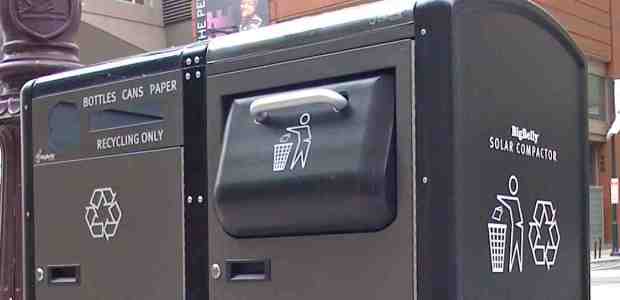
Waste Cans a Big Part of NYC Anti-Rat Program
More frequent trash pickup, increased fines for illegal dumping, changing the rules to require larger buildings to put out the trash in the very early morning hours as close to the pickup time as possible, and eliminating dirt basements in the city's public housing buildings are all part of the $32 million plan.
New York City Mayor Bill de Blasio announced a $32 million neighborhood rat reduction plan on July 12, saying his administration is "trying to make sure people in every community can have health and sanitation and decent living conditions. This announcement today is part of that. It's part of addressing something that's been a challenge in New York City for a long time and honestly hasn't been addressed well enough," he added. "But we're going to make that change starting today."
"We're very, very proud as New Yorkers and we know there are thousands of wonderful symbols of this city starting with our people. We think of – when you think of New York City we’re proud to think about the Statue of Liberty or Central Park or Coney Island or Harlem or any number of other wonderful places. Unfortunately when you think of New York City you think of some things that aren't so good and haven't been so good for a long time. And the image of rats does come to mind. That's because it's been a problem for way too long." de Blasio said. "I don't know any New Yorker who likes rats. It doesn't matter what community you're in, everyone wants to get rid of rats. I will admit personally to having a certain admiration for Pizza Rat, but that's the only rat I have ever managed to like. So, think about what it means to everyday life. Rats are incredibly upsetting to people in every way. They're dangerous. They're unhealthy. It's not just an aesthetic thing. It's something much deeper.
He said the city "came to the recognition that simply exterminating rats on a regular basis wasn't enough. It's good. It's been helpful," he said. "I don't want us to take away from the excellent efforts that really did reduce the population some but as we really looked at the facts it became clear that our efforts at extermination over years and decades were basically like bailing out a leaky boat: You would get the water out for a while and then it would just come back."
So his plan is a change in the city's approach that goes at the root causes -- "stopping rats from having a place to live, stopping them from having the food that they want to eat. It's as simple as that."
The largest program of its type ever attempted in New York City, it is a bid to reduce the rat population by 70 percent. Big Belly Trash Cans are part of it, he said, adding that they are rat proof trash cans. New Yorkers will see them placed in neighborhoods that have the biggest rat problems in the city starting right away, he said. And the city has identified three areas that have the biggest problems: East Village, Lower East Side, Chinatown; the Grand Concourse area in the Bronx; and Bed-Stuy and Bushwick in Brooklyn. It is addressing those areas first, with more frequent trash pickup, increased fines for illegal dumping, changing the rules to require larger buildings to put out the trash in the very early morning hours as close to the pickup time as possible to deprive rats of time to go find that source of food, and eliminating dirt basements in the city's public housing buildings.
"So, look, in the end, this is not a magic bullet, but it is a very big change of approach," the mayor said. "We think it's going to change people's lives. We think it's going to make this city healthier."